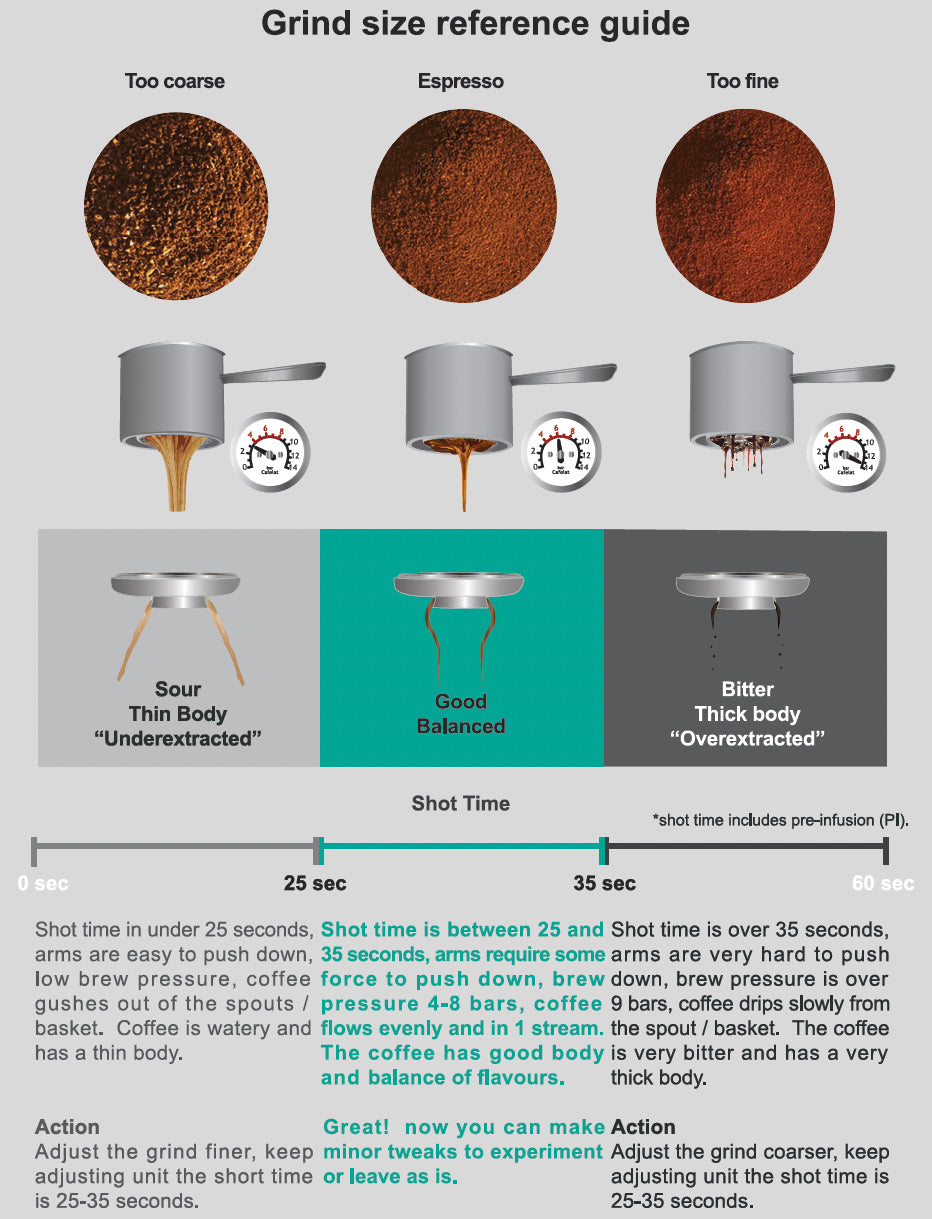If you're committed to enhancing your home barista skills, understanding espresso extraction timing is crucial. Making a great espresso goes beyond pressing a button; it involves balancing timing, grind size, and extraction flow to create the perfect shot. Though it might seem complex initially, practice and knowledge will make the process feel natural.
Why Espresso Extraction Timing Matters
The timing of your espresso extraction is essential for achieving a balanced flavor. Timing determines how much flavor is drawn from the coffee grounds, which influences the taste of each shot. If your espresso extracts too quickly, you'll encounter under-extraction, resulting in a sour, weak taste. Conversely, a prolonged extraction time can lead to over-extraction, bringing out bitterness and an unpleasant aftertaste. For a better understanding of how extraction timing affects flavor, you might want to check out our Philips LatteGo 5400 Review, Philips 3200 LatteGo Review, and Philips 4300 LatteGo Review, where we dive deeper into espresso quality and machine performance.

Methods for Timing Espresso Extraction
When it comes to timing your espresso extraction, there are two popular approaches. You can start the timer when you press the brew button or when the first drop of espresso hits the cup. Personally, I prefer starting the timer from the moment I press the button, as it includes pre-infusion time and ensures consistency across multiple shots.
Ideal Timing for Espresso Extraction
Generally, the recommended espresso extraction time falls between 25 and 35 seconds. In my experience, aiming for a 30-second extraction provides consistently flavorful shots. If your shot finishes under 25 seconds, it’s likely under-extracted, resulting in a weak or sour flavor. Shots extending beyond 35 seconds tend to be over-extracted, which can lead to a bitter taste.
Adjusting Grind Size for Optimal Timing
Grind size plays a critical role in controlling extraction timing. A finer grind will slow the extraction, while a coarser grind will speed it up. If your shot pulls too quickly, your grind is probably too coarse. If it takes too long, your grind is likely too fine. After experimenting with various grind settings, I discovered the optimal grind for my machine, which improved both the timing and flavor of my shots.
Beyond Timing: Letting Taste Guide You
Although timing is essential, taste remains the ultimate indicator of a successful espresso. Even if your timing seems correct, the flavor can reveal otherwise. A well-extracted shot balances sweetness, acidity, and body. If your espresso tastes sour or watery, consider grinding finer or adjusting your brew ratio. Conversely, if it tastes bitter or dry, it may be over-extracted, suggesting a coarser grind or a shorter extraction time.
Common Espresso Extraction Issues and Solutions
Here are quick fixes for common espresso issues:
- Under-extraction: If your shot pulls too quickly (under 25 seconds) and tastes sour or weak, try a finer grind.
- Over-extraction: If the shot takes too long (over 35 seconds) and has a bitter taste, adjust to a coarser grind.
The Impact of Pre-Infusion on Timing
Pre-infusion also affects espresso extraction timing. Some machines offer pre-infusion settings, where water is gently applied to coffee grounds before full pressure is reached. This process helps to even out extraction and can significantly improve the final shot. If your machine doesn’t have an automatic pre-infusion feature, you can replicate it by briefly starting and stopping the pump before allowing full extraction.
Exploring Brew Ratios for Flavor Precision
The brew ratio, or the relationship between coffee grounds and espresso yield, is another essential factor. A common starting point is a 1:2 ratio, such as using 18 grams of coffee to produce 36 grams of espresso. Experimenting with this ratio can reveal different flavors, depending on the bean type. For example, lighter roasts often benefit from a lower ratio (like 1:2.5) to enhance fruity, bright notes, while darker roasts maintain richness with a 1:2 ratio, avoiding excessive bitterness.
Sensory Evaluation: The True Test of Espresso
Ultimately, taste is the final test for espresso. Even with perfect timing, other variables like grind size or brew ratio can affect the flavor. I’ve had shots that extracted perfectly within 30 seconds but fell short due to an incorrect grind size. By tasting and adjusting these elements, I’ve managed to consistently produce espresso that delivers the desired balance and complexity.

Conclusion: The Blend of Art and Science in Espresso Perfection
Mastering espresso extraction timing is a fulfilling journey that combines art and science. By focusing on timing, adjusting grind size, experimenting with brew ratios, and ultimately relying on taste, you’ll be well-equipped to pull the perfect shot every time. It requires patience and practice, but the reward of a perfectly brewed espresso is well worth the effort. For those looking to fine-tune their espresso-making skills, a DeLonghi Magnifica Evo Review or DeLonghi Magnifica S Review can offer valuable insights into achieving the perfect extraction.
